MusicRadar Verdict
Offers so much for a lot less money than the standard model. A superb studio workhorse and lightweight gigging keyboard to boot.
Pros
- +
Superb sounds from the Roland archive.
- +
A lot of the full Fantom’s features for a lot less money.
- +
Expandable via Roland Cloud.
Cons
- -
No aftertouch on the keyboard.
- -
Classic Roland Cloud synth emulations don’t come included.
- -
Workflow isn’t immediately obvious and there is a learning curve.
MusicRadar's got your back
Roland Fantom-0 Series: What is it?
Released in 2019, Roland’s latest generation Fantom keyboards are excellent workstations, but they’re big, heavy (particularly the 88-key model) and pricey. As such, there’s definitely a gap in the market for a ‘budget’ Fantom range that offers similar tech but at a lower price point and in a more compact form factor.
Fantom-0 is that range; comprising 61-, 76- and 88-note models, the keyboards it contains are designed to be used in your studio and also taken to the stage. And, while they’re significantly more affordable than their full-fat-Fantom siblings, they come with a lot of their stablemates’ most desirable features.
This means that sounds come courtesy of three high-spec Roland engines: ZEN-Core, SuperNATURAL and the Virtual Tonewheel Organ. What’s more, you can add more instruments – including emulations of classic Roland sounds – via Roland’s Cloud service.
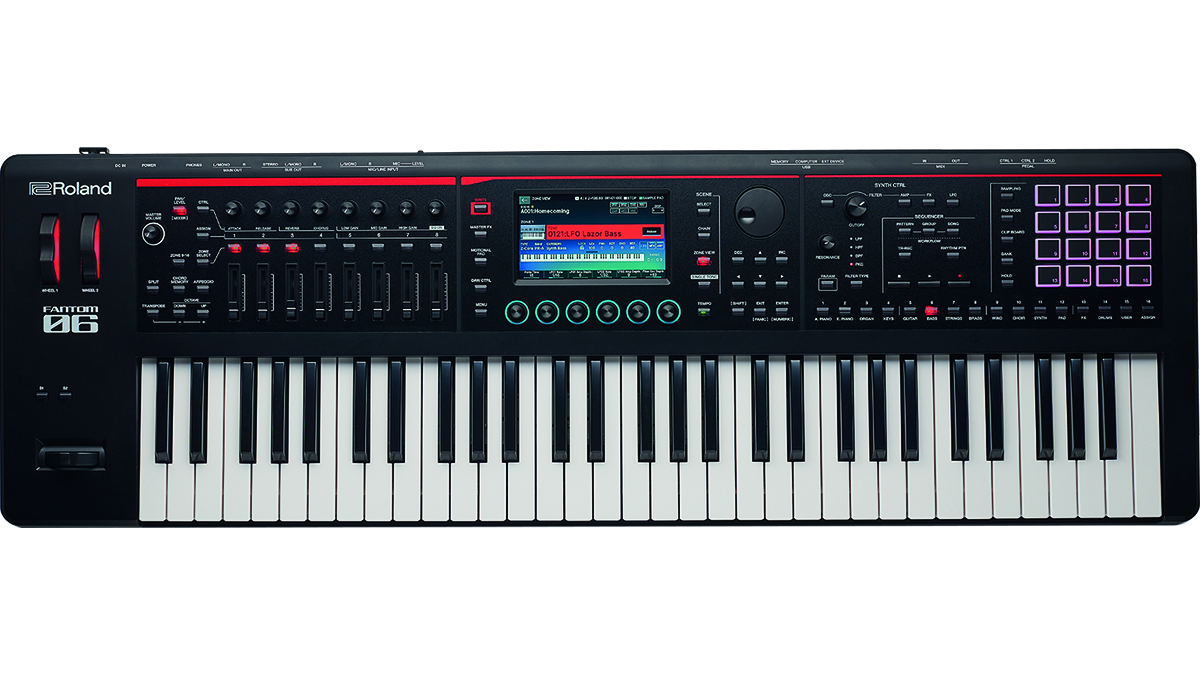
Roland Fantom-0 Series: Performance and verdict
The Fantom-0 inherits the Scene/Zone/Tone architecture of the standard Fantoms, with each top-level Scene (there are four banks of 128) containing 16 Zones, and each Zone housing one of the 3,500+ plus tones or 90+ drum kits. There’s also a comprehensive effects section.
Of course, this being a workstation keyboard, sounds aren’t all you get for your money. The Ableton Live Session View-style sequencer offers 16 tracks, each of which can contain up to eight patterns, and you can record in real/step-time or via Roland’s classic TR-REC method, which will be familiar to anyone who’s used one of the company’s drum machines down the years. There’s even a piano roll for editing, accessible via the reasonably responsive touchscreen.
Interestingly, though said LCD screen is smaller than the one on the standard Fantom – 5.5-inch rather than 7-inch – it actually has better resolution: 1,280 x 720 ‘dots’ rather than 800 x 480.
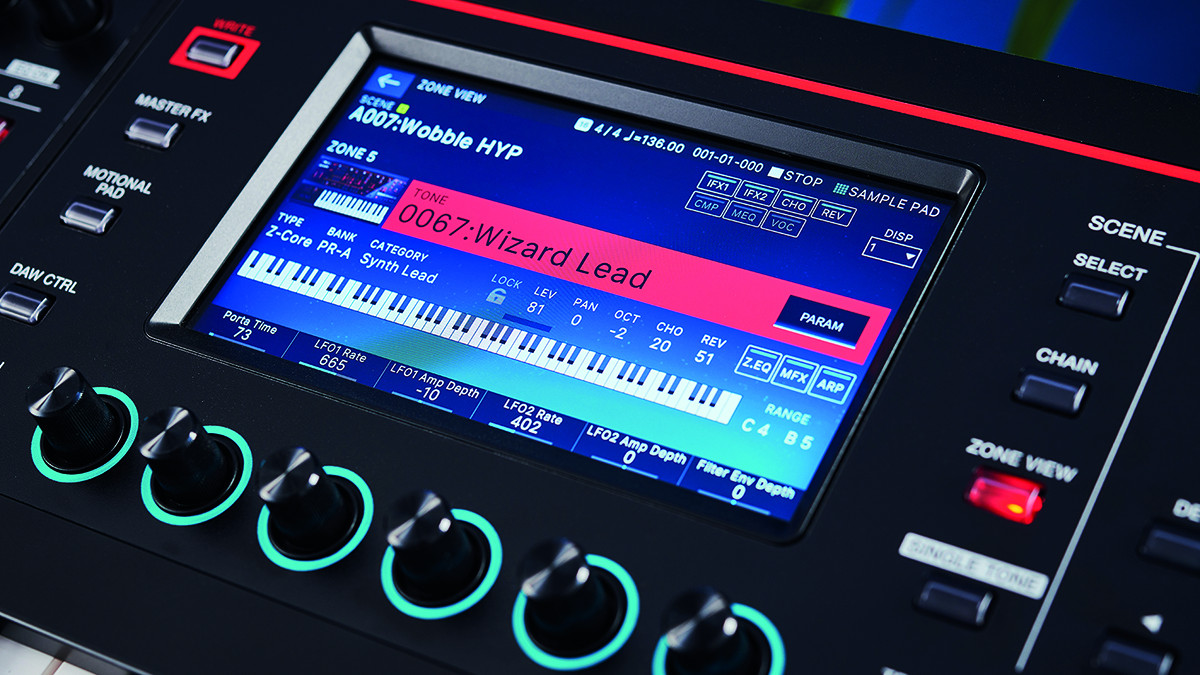
There’s sampling, too, either to the 16 pads or the keyboard if you want to play pitched sounds. You can even import multisamples and use them to create new ZEN-Core tones.
Want all the hottest music and gear news, reviews, deals, features and more, direct to your inbox? Sign up here.
The smaller two models in the range (Fantom-06 and Fantom-07) have synth action keyboards, while the Fantom-08 has weighted-action keys. Other control features, including the touchscreen, clickable parameter control knobs, sliders, pitch/mod lever and light-up pitch/mod wheels, are the same on all models. Wisely, Roland has also put thought into the Fantom-0’s computer integration. It has a built-in 4x32 USB audio interface and offers native control over Logic Pro, MainStage and Ableton Live.
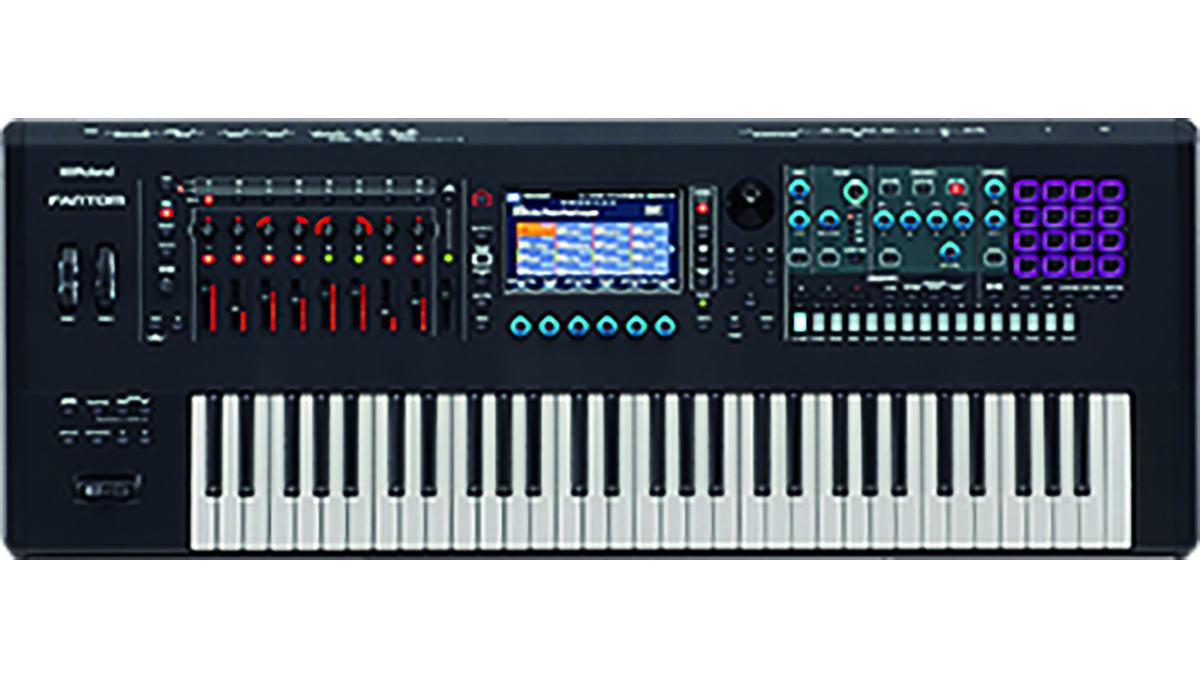
• Roland Fantom 6/7/8
If you want the full Fantom experience – superior build quality, aftertouch keyboard and more features – then here it is, but you’ll have to pay for it...
• Yamaha MODX+
Yamaha also offers a a mid-range workstation; the MODX+ draws inspiration from its flagship Montage range, and is perhaps the Fantom-0’s closest rival.
• Korg Nautilus
The third member of ‘The Big Three’ manufacturers offers us a stripped-back version of the Kronos. Another excellent option for those who want an ‘all-in-one’ keyboard.
When we took delivery of our Fantom-08, the first thing we noticed was how light the box was. There was no cursing from the courier on the doorstep about the weight of the thing, and it’s easy to manoeuvre on your own (something that can’t be said of a lot of full-size ‘boards).
We’d say that Roland has ticked the portability box, then: to give you some context, the Fantom-08 weighs less than the Fantom-6, the smallest model in the flagship Fantom range – 14.8kg as opposed to 15.3kg – and almost half that of the Fantom-8, which tips the scales at 27.7kg.
The downside to this is that the Fantom-0 models don’t feel as sturdy as their bulkier brethren. While it’d be unfair to call them flimsy, there’s certainly more plastic on show on the Fantom-0, and we wouldn’t like to put Roland’s claim that they’re “ultra-rugged” to any kind of test.
While we’re on the subject of differences between the Fantoms, we should also point out that, although both the synth- and weighted-action keyboards in the 0 series are pretty playable, unlike those on the standard Fantoms, they don’t have aftertouch.
Internally, the Fantom-0 has less DSP power than the Fantom, and less memory for multisamples and Model Expansions. Relatedly, you don’t get the Juno-106, Jupiter-8, SH-101 and JX-8P models included, either, so you’ll need to budget extra for those if you want them. 15 Wave Expansions and 10 Sound Packs are included.
Sadly, you can’t use the new n/zyme Model Expansion with the Fantom-0, presumably because of the aforementioned drop-in DSP power. The Fantom-0 is also missing Roland’s V-Piano engine, another of the selling points of its more expensive sibling. You lose the analogue filter, too, and there are fewer realtime controls.
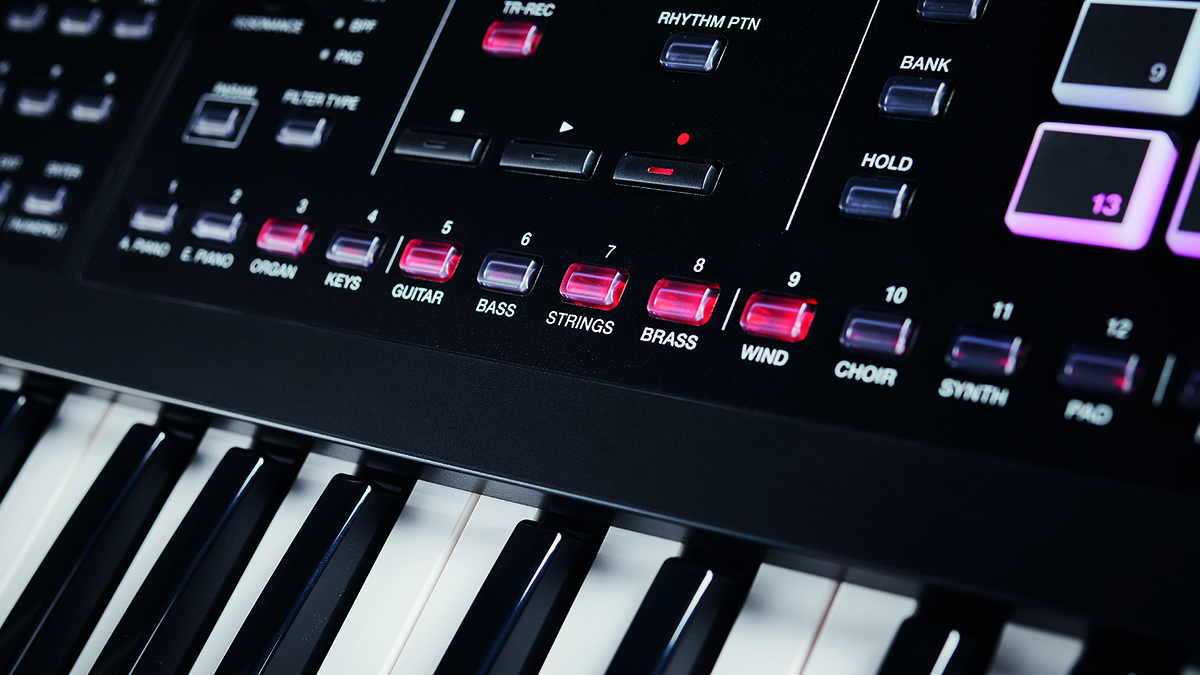
If the Fantom-0 seems little more than the Fantom’s poor relation, though, reconsider. For its price, it packs in an awful lot: that ZEN-Core synth engine sounds as good as ever, the acoustic pianos and other ‘real’ instruments are lovely (who needs V-Piano, eh?) and the overall sound palette is vast. The Fantom-O gives you a great platform on which to use Roland’s excellent Model Expansions, too, though you’ll need to factor in the price of a Roland Cloud subscription if you want to access them, or shell out for Lifetime Keys.
There is a learning curve – the whole Scenes/Zones/Tones nomenclature can be confusing.
Having had the Fantom-0 in our studio, though, we think it’s a great keyboard to have around. It sums up everything Roland is trying to do right now – blend old and new technologies and combine them with software-based expandability – and until you’ve had a workstation that you can just sit down and play/record with without having to turn on the computer, you don’t quite know what you’re missing. Yes, there are still reasons to buy a fully-fledged Fantom – better build quality matters to pros – but for most of us, this will do very nicely indeed.
MusicRadar verdict: Offers so much for a lot less money than the standard model. A superb studio workhorse and lightweight gigging keyboard to boot.
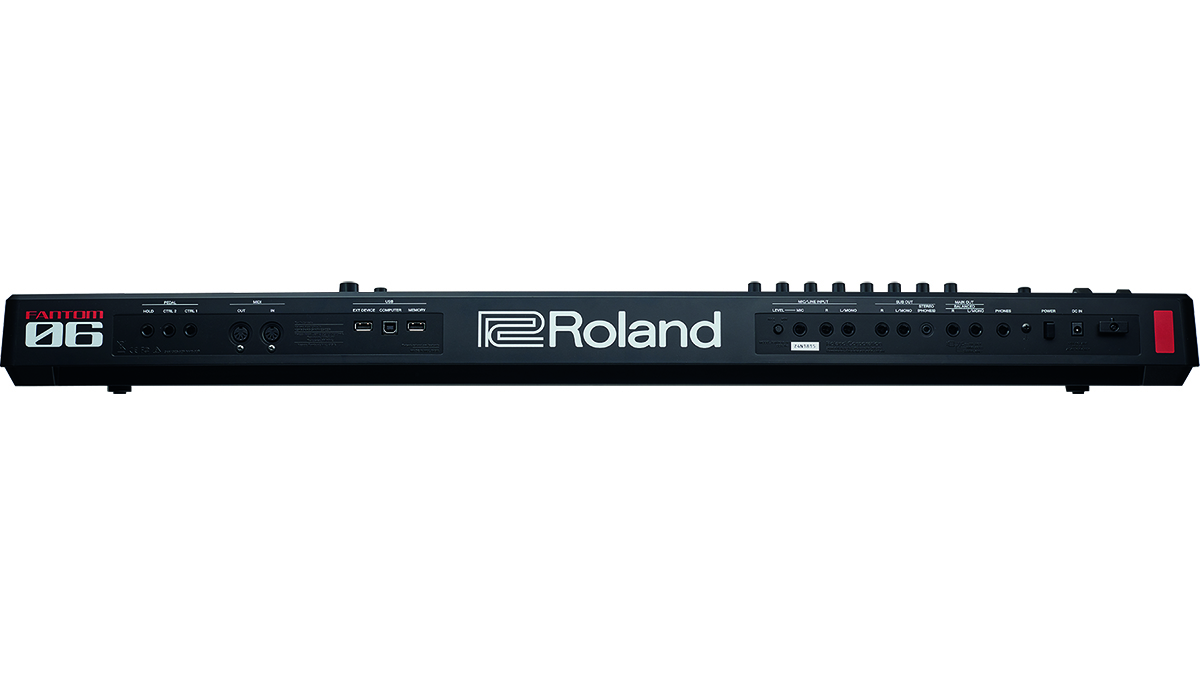
Roland Fantom-0 Series: Hands-on demos
Roland
Andertons Synths, Keys and Tech
Sweetwater
Mannys Music
Roland Fantom-0 Series: Specifications
- KEY FEATURES: Three Roland synth engines, sampling, clip-based sequencing with instant pattern recording and triggering, touchscreen, multiple realtime controllers, 16 pads, mic input and onboard vocoder, 4x32 USB audio interface and native integration with Logic Pro, MainStage, and Ableton Live, support for Model Expansions, Sound Packs, Sample Packs and more from Roland Cloud.
- CONTACT: Roland

I’m the Deputy Editor of MusicRadar, having worked on the site since its launch in 2007. I previously spent eight years working on our sister magazine, Computer Music. I’ve been playing the piano, gigging in bands and failing to finish tracks at home for more than 30 years, 24 of which I’ve also spent writing about music and the ever-changing technology used to make it.
